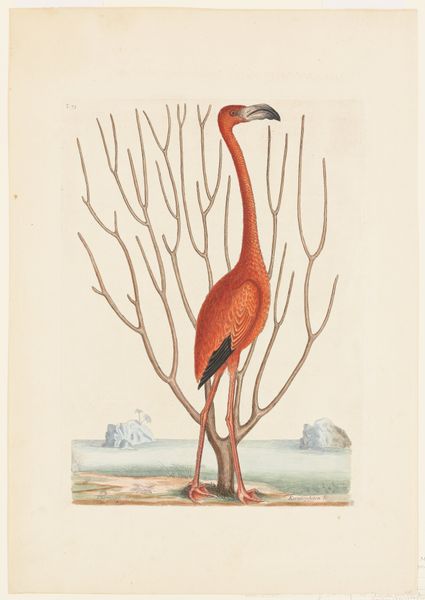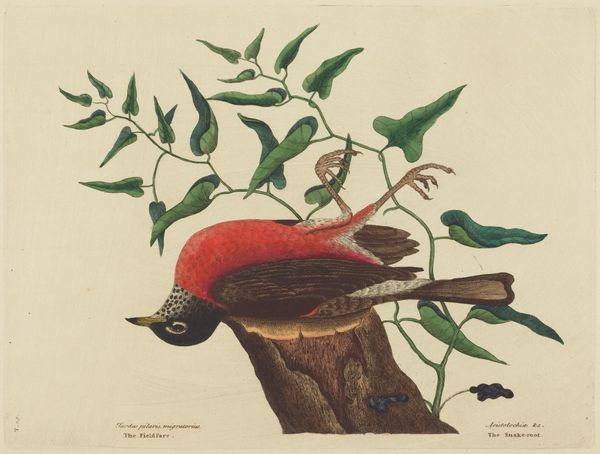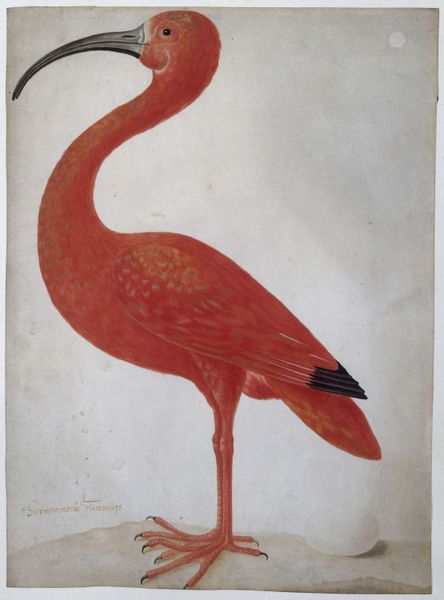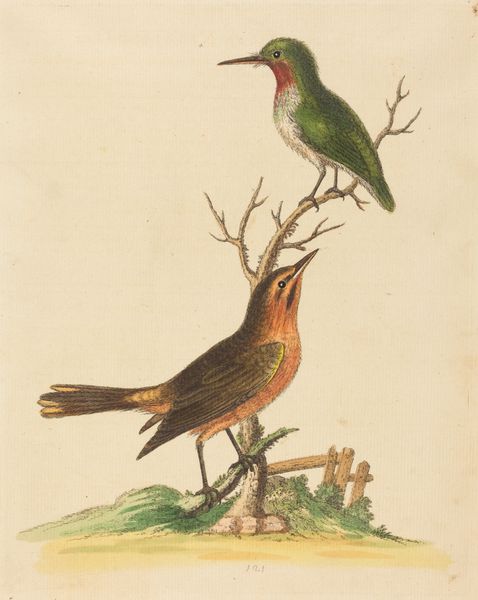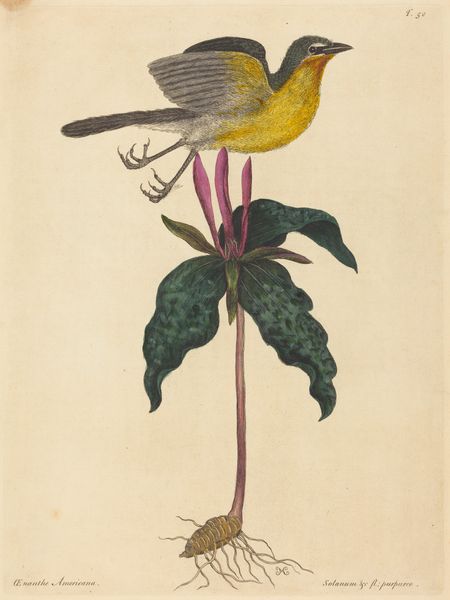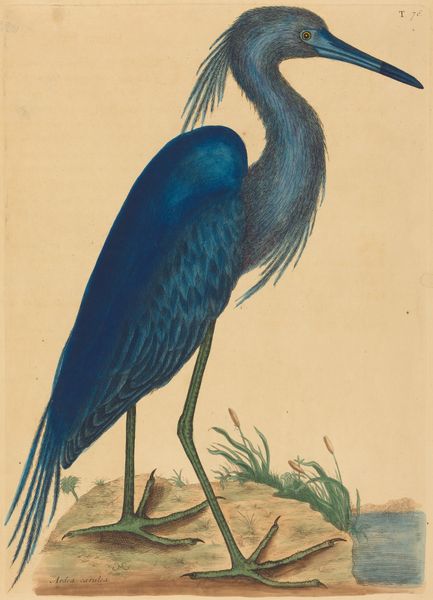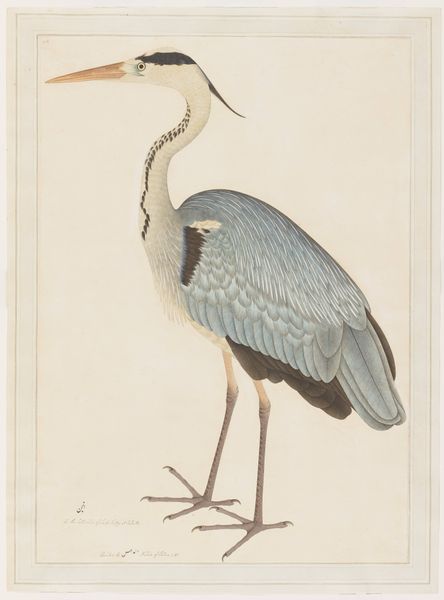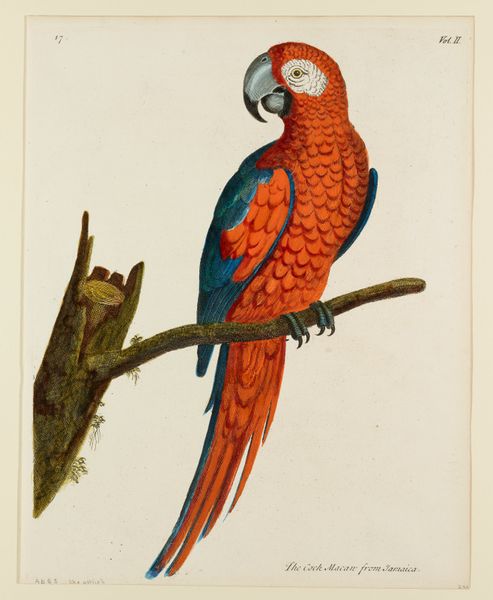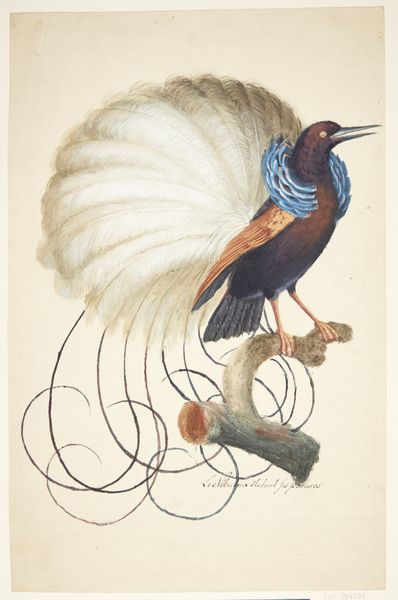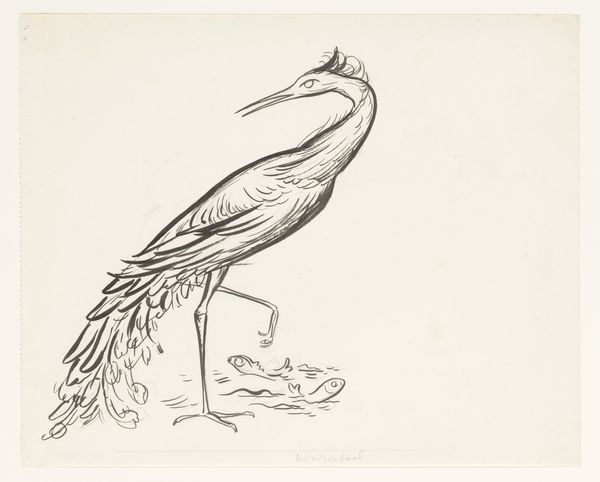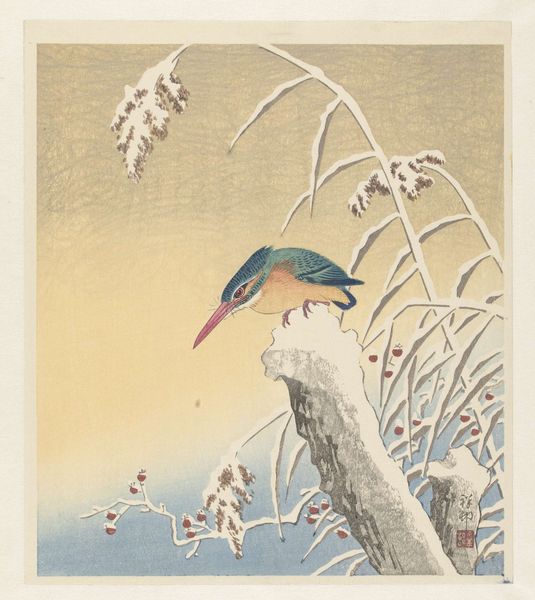
coloured-pencil, print, watercolor
#
coloured-pencil
#
water colours
# print
#
landscape
#
watercolor
#
coloured pencil
#
naturalism
Dimensions: plate: 35.2 x 25.9 cm (13 7/8 x 10 3/16 in.) sheet: 50.3 x 35.6 cm (19 13/16 x 14 in.)
Copyright: National Gallery of Art: CC0 1.0
Editor: So here we have Mark Catesby's "The Flamingo," possibly from between 1731 and 1743, using watercolor and coloured pencil as the medium, eventually turned into a print. There’s almost a stark contrast between the flamingo’s vivid color and the bare tree it's standing in front of. What stands out to you about this piece? Curator: I’m immediately drawn to the process of its creation. Think about the context: Catesby journeying to the Americas, gathering specimens, making sketches in the field. This wasn’t simply about depicting a flamingo; it was about the labour of documenting, classifying, and presenting this "new" world to a European audience. The print format itself speaks to the desire to reproduce and distribute knowledge, a sort of mass production of nature, if you will. Editor: Mass production, even then! What about the actual materials he uses? Curator: Exactly. Consider the materiality of watercolor and coloured pencil. These are relatively inexpensive and portable mediums, well-suited to fieldwork. Yet, the final product, a print, elevates this from a mere field sketch to something meant for consumption – both scientific and aesthetic. Think about how this contrasts with the high art of the period, like oil paintings commissioned by the wealthy. Editor: So, by using these accessible materials, and then turning it into a print, he democratized the image? Curator: In a way, yes. He's blurring the lines between scientific illustration and artistic representation, between high art and the labor of observation and documentation. And even further, think about the societal implications; it showcases nature being turned into a commodity for consumption. Editor: That's a different way of thinking about it than I expected. Thanks, it's made me think a lot about context and how artworks were produced, even in the 18th century. Curator: My pleasure! Examining art through the lens of its production and materials always reveals fascinating layers of meaning and broader societal connections.
Comments
No comments
Be the first to comment and join the conversation on the ultimate creative platform.
